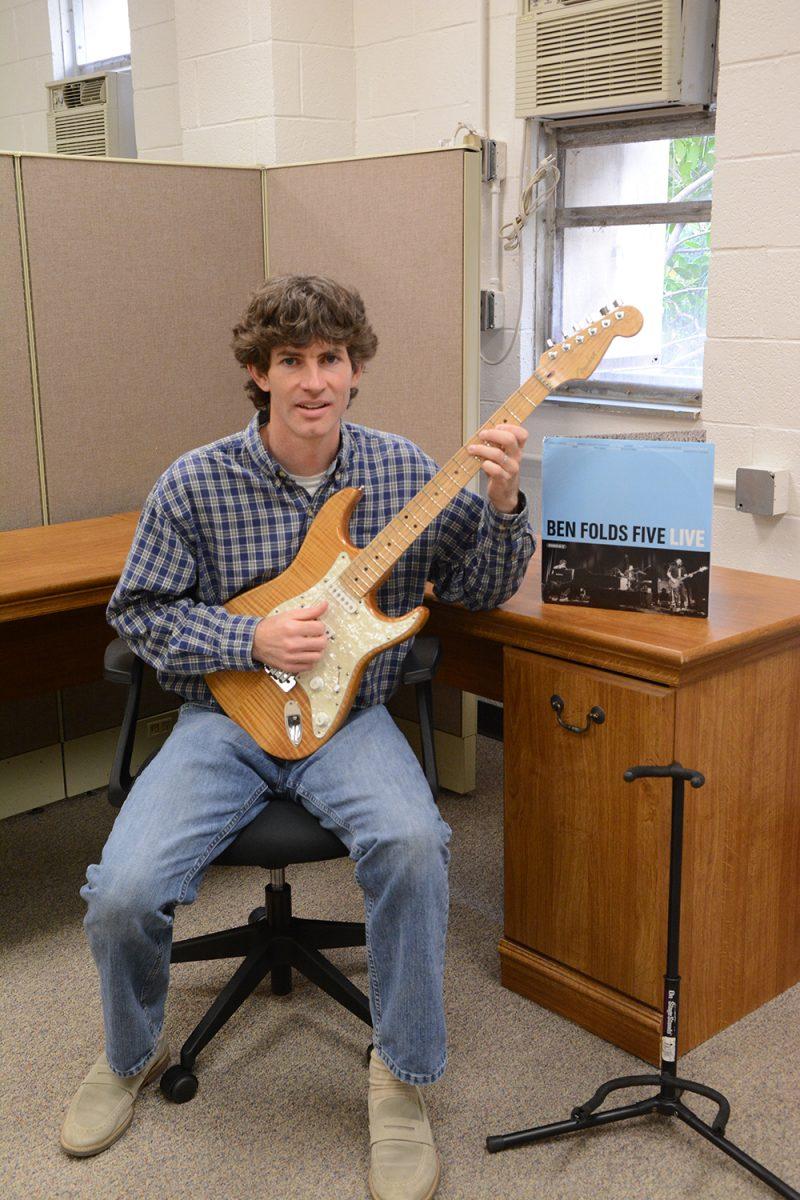If Muddy Waters and Jimi Hendrix are not your style, the music department has another course covering artists like Madonna and Drake. The ‘80s, ‘90s and 2000s are a little harder to pin down, but that’s what makes them so fun.
The course, taught by William Boone, focuses on the shifts in music structure and how these shifts are influenced by culture. In addition to Intro to Popular Music, Boone has taught a course on hip-hop and a course on African-American music.
“We work roughly chronologically, tracing major style shifts in the music,” Boone said. “We try to focus a lot of attention on the music itself, learning music structure, different instrumentation and how music style has shifted and then looking at how that connects to broader social, cultural and political issues.”
Boone said major themes tackled include politics and identity, which itself encompasses race, class and gender. The course also discusses technology’s influences on music and the ways music has influenced the development in new technologies in turn.
“We look at the birth of MTV,” Boone said. “That went on the air in 1981 and was sort of a watershed moment when you’re looking at this era of music. We start looking at some of the major popstars of that era: Madonna, Prince, Michael Jackson. Then we look at different things happening in the 80s, what we’d call the new traditionalists, Bruce Springsteen, Tom Petty, that kind of stuff. Then we look at some things that came from the fringes of mainstream music and eventually made their way to mainstream. Heavy metal for one. Stuff that came from the UK and eventually inspired bands like Metallica and Guns N’ Roses.”
The course examines several other instances of fringe music evolving into large genres, such as rap, grunge, alternative music and teen pop.
Boone said that he also tries to convey the idea that all of these movements across time built on each other, citing ‘90s band Rage Against the Machine’s ‘80s metal influences as an example.
“It’s a little artificial to divide music into decades, but I think it helps to organize things to say the 80s had these kind of distinctive styles, the 90s had these styles, and so on,” Boone said. “When we get to today, it gets a little more muddy because you don’t have the benefit of history to look back and see how everything’s panned out. I try to bring in the students into the conversation and we talk about as much modern music as possible. I have them bring in examples so they can teach me some things when it comes to the modern stuff.”
The course enters the current century by looking at early 2000s pop trends, examining culture phenomenon like “American Idol” and teen idol pop music in general. From there, it becomes a question of what is hot right now.
“Last year we talked about Drake, modern country artist Maren Morris and some artists that come from indie rock like Drive-by Truckers,” Boone said. “Usually for the modern stuff I’ll check out the charts and see what is hot this week so I can bring in some of that music and talk about it with the students. We try and see what kind of influences we can pick up that connect to things we’ve talked about in previous decades.”
Christian Morris, a freshman studying engineering, said he really enjoyed writing album reviews as part of an assignment for the class and that he believes he gained a newfound appreciation for the music. He said his favorite artist who has come up in class is the Sugarhill Gang, who came up during a class discussion about the rise of rap.
“I chose the course for two reasons: It was close to the start of the year, and I had just under 12 credit hours, and when looking for any available GEP’s, I found this one to be most interesting,” Morris said. “I recommend this course to any student who finds themselves analyzing music as they listen, or to those curious about how the world’s music has become what it is today.”
Boone said he likes to bring local artists in during some classes to provide the students with insights into the music industry.
“Every lecture has been interesting, but I must say the one yesterday was the most unique one,” said Fabian Ruiz, a junior studying visual arts. “Dr. Boone invited over Robert Sledge — bassist for one of North Carolina’s most famous alternative bands, Ben Folds Five — and he narrated to us some of his most captivating stories as a veteran of the music business. He gave us some insight into what the Triangle’s indie scene was like in the ‘90s and how some of that has changed today.”
Intro to Popular Music 1980s-Present can currently count as either a visual and performing arts credit or a U.S diversity credit. A student is not required to take Intro to Popular Music 1950s-70s in order to take this course.













